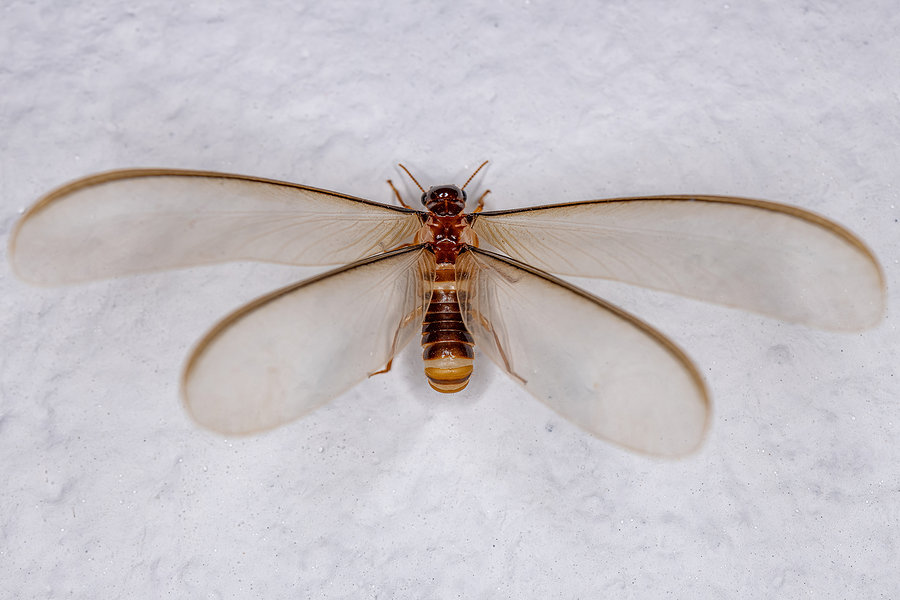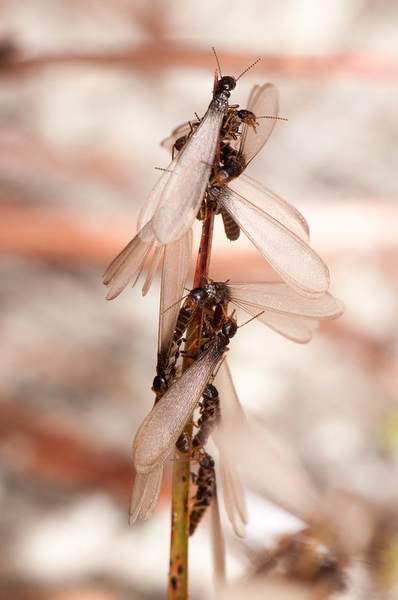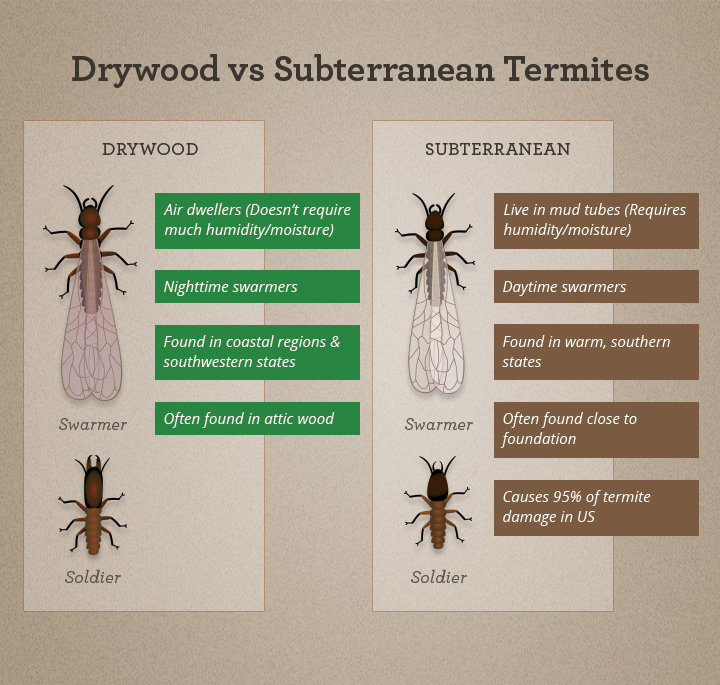Yes, swarming termites usually indicate an infestation. These winged insects are searching for new places to colonize.
If you see them, it’s time to act. Termites are a homeowner’s nightmare. They cause significant damage to wooden structures. Understanding their behavior is key. Swarming termites, often seen in spring, are a clear sign of a nearby colony. They leave their nests in search of new homes.
If you spot them, there’s a good chance your home is at risk. This blog will help you recognize the signs and take the right steps. Knowing what to look for can save your property and your peace of mind. Let’s dive deeper into the world of termites and what their presence means for your home.
Swarming Termites: An Introduction
Swarming termites can be a troubling sight for homeowners. They emerge suddenly, often in large numbers. Their appearance can cause alarm. But what does it mean?
This section aims to shed light on these flying insects. Understanding their behavior is key. Let’s explore what swarming termites are and why they swarm.
What Are Swarming Termites?
Swarming termites are winged termites. They are also known as alates. These termites have left their colony to find a new home. They are the reproductive members of the termite colony.
They typically appear in the spring. Warm temperatures and rain trigger their emergence. Their goal is to start a new colony. Swarming is a natural part of their life cycle.
Why Termites Swarm
Termites swarm to reproduce and expand their species. The colony produces alates when it matures. These winged termites leave to find mates.
Once they find a mate, they shed their wings. They then look for a suitable place to start a new colony. Swarming helps termites spread and survive.
Swarming termites can indicate a nearby colony. It doesn’t always mean an infestation in your home. But it’s a sign to stay alert.

Credit: www.callnorthwest.com
Signs Of Termite Infestation
Termites can cause significant damage to homes. Identifying the signs of termite infestation early can save you time and money. Understanding these signs helps in taking quick action.
Visible Indicators
Look for discarded wings near windows and doors. These wings are left behind by swarming termites. Mud tubes along walls and foundations are another sign. These tubes protect termites as they travel. You might also see damaged wood. Wood that sounds hollow when tapped could be infested.
Hidden Clues
Termites often stay hidden. Listen for quiet clicking sounds inside walls. This noise comes from termites eating wood. Check for blistering in wood floors. Blistering can mean termites are feeding below the surface. Pay attention to small piles of sawdust. Termites create these as they tunnel through wood. Also, look for uneven or bubbling paint. This can be a sign of moisture buildup from termite activity.
Differences Between Swarming And Infestation
Hey friends, today we’re going to talk about termites. You may have seen them flying around and wondered if you have a termite problem. Let’s break it down. Swarming and infestation are not the same thing. They have different signs. They need different treatments. Let’s dive into the differences so you can understand what’s happening in your home.
Swarming Behavior
First, let’s talk about swarming. Swarming termites are winged termites looking to start new colonies. They leave their old home to find a new place to build. This usually happens in spring or early summer. They are attracted to light. So, you might see them around windows or light fixtures.
Key points about swarming behavior:
- Happens in spring or early summer
- Termites have wings
- Attracted to light
- Short-lived event
Think of it like a termite road trip. They leave their old nest to find a new one. But seeing them doesn’t always mean you have an infestation. It’s a sign to be cautious though.
Infestation Characteristics
Now, infestation is more serious. This means termites have settled in and are causing damage. If you see mud tubes, hollow wood, or discarded wings, you might have an infestation. These termites are already eating your wood and making themselves at home.
Signs of an infestation:
- Mud tubes on walls
- Wood sounds hollow
- Discarded wings
- Damaged or crumbling wood
Imagine termites as uninvited guests who not only come to the party but also start breaking your furniture. Not fun, right? An infestation means you need to act fast. Get professional help to prevent more damage.
In short, seeing a swarm doesn’t always mean you have an infestation. But it’s a good idea to check. If you find signs of an infestation, call an expert. Take action quickly to protect your home. Stay safe and termite-free!

Credit: content.ces.ncsu.edu
Causes Of Termite Swarms
Hey friends, today we’re diving into the causes of termite swarms. Ever seen those flying insects and wondered if it means trouble? Well, it could. Termite swarms can indicate an infestation. But don’t worry, we’ll break it down simply. Let’s explore the main reasons why these pesky critters decide to take flight.
Environmental Triggers
Termites are picky about their environment. They wait for the perfect conditions to swarm. Think of it like a party. They won’t show up unless everything is just right. Here are some common environmental triggers:
- Humidity: Termites love moisture. After heavy rains, the ground is damp, which triggers their swarming.
- Temperature: Warm weather is a green light for termites. They prefer temperatures between 70°F and 90°F.
I remember after a long rainy season, I saw a swarm of termites in my backyard. It was alarming, but understanding their behavior helped me stay calm and take action.
Seasonal Factors
Season plays a big role in termite swarming. Just like how certain flowers bloom in spring, termites have their own timing. Here’s what you need to know:
- Spring and Summer: Most swarming happens during these seasons. The weather is ideal for their activity.
- Day and Night: Some termites swarm during the day, while others prefer the night. It depends on the species.
Once, during a warm spring evening, I saw a swarm of termites near my porch light. It was unsettling, but knowing it was their swarming season helped me understand the situation better.
Understanding these causes can help you stay prepared. So, next time you see swarming termites, you’ll know why they’re there. And more importantly, you’ll know what to do.

Potential Damage From Termites
Termites can wreak havoc on homes. Swarming termites often indicate an infestation. Understanding potential damage can help in preventing costly repairs. Let’s explore how termites cause harm.
Structural Damage
Termites eat wood. They weaken wooden structures. This includes walls, floors, and beams. Over time, the damage worsens. The home may become unsafe. Wooden furniture can also suffer. Termites chew through tables and chairs. They can ruin antique pieces.
Financial Impact
Repairing termite damage is expensive. Homeowners may spend thousands. Insurance often doesn’t cover termite damage. This adds to the financial burden. Regular inspections can help. Early detection saves money. Pest control services also cost money. Prevention is cheaper than repair.
Preventing Termite Infestation
Swarming termites often signal a potential infestation. These winged insects emerge to start new colonies, indicating nearby termite activity. Regular inspections help prevent serious damage to your property.
Preventing a termite infestation is vital for maintaining a safe home. Termites can cause severe damage if not controlled early. You can take steps to keep your home termite-free.
Home Maintenance Tips
Regularly inspect your home for signs of termites. Check wooden structures and foundations. Keep wood away from the ground. Store firewood and lumber away from your home. Ensure proper drainage around your house. Fix leaky pipes and faucets. Moisture attracts termites. Ventilate crawl spaces to reduce humidity.
Seal all cracks and crevices in your home’s foundation. This prevents termites from entering. Use termite-resistant materials when building or renovating. Keep an eye on your roof and attic. Termites can enter through damaged shingles or vents.
Professional Prevention Methods
Hire a professional pest control service. They can inspect your home thoroughly. Professionals use advanced tools to detect termites. They provide effective treatment options. Regular inspections by experts can prevent infestations.
Consider chemical barriers around your home. Professionals can apply termiticides to the soil. This creates a protective barrier. Bait stations are another option. They attract and kill termites before they reach your home.
Experts can also use physical barriers. These include metal mesh or sand. They block termites from entering your property. Regular maintenance by professionals is key. It ensures your home remains termite-free.
Dealing With Swarming Termites
Hey friends, today we are going to talk about a common household issue: swarming termites. Have you ever seen a bunch of flying insects around your house and wondered what they were? If they are swarming termites, you might feel a bit worried. Don’t panic! Let’s dive into how you can deal with them effectively.
Immediate Actions To Take
So, you’ve spotted swarming termites. The good news? You can handle this. Start with these simple steps:
- Turn off lights: Termites are attracted to light. If they are swarming around your lamps or windows, switch off the lights to discourage them.
- Seal entry points: Quickly check for any cracks or gaps in walls, windows, or doors. Seal them to stop termites from getting inside.
- Remove wood debris: If you have any wooden items or debris near your house, remove them. Termites love wood and this could be attracting them.
- Use a vacuum: You can vacuum the swarming termites to get rid of them quickly. Dispose of the vacuum bag outside to prevent them from coming back.
When To Call A Professional
Sometimes, the situation might be too tricky to handle alone. Here’s when you should consider calling a termite control professional:
- Repeated swarms: If you keep seeing swarming termites over and over, it might mean there is a bigger problem. Professionals can identify and treat the source.
- Structural damage: Notice any damage to your walls, floors, or wooden furniture? It’s time to get expert help. They can assess the damage and suggest the best treatment.
- Large infestations: If the number of termites is overwhelming, don’t wait. Professionals have tools and treatments that are more effective than what you can do on your own.
I once had a similar issue in my home. I tried all the immediate actions, but the termites kept coming back. Eventually, I called a professional. They found a nest in my attic that I would have never discovered on my own. The lesson? Sometimes, it’s worth getting expert help.
So, if you see swarming termites, act fast with these tips. And remember, if it feels like too much, calling a professional can save you a lot of trouble.

Long-term Termite Control
When you see swarming termites, it can be worrying. But it doesn’t always mean there is a full-blown infestation. However, to protect your home for the long term, taking action is key. In this section, we’ll talk about long-term termite control. We’ll cover regular inspections and ongoing treatment options to keep your home safe from these tiny invaders.
Regular Inspections
Regular inspections are like health check-ups for your house. Just like you visit a doctor to catch any health issues early, you should have a professional inspect your home for termites. Regular inspections help you spot problems before they become big issues.
Here’s why regular inspections are important:
- Early Detection: Catching termites early can save you a lot of money and stress.
- Damage Control: Inspectors can find the exact spots where termites are hiding.
- Peace of Mind: Knowing your home is termite-free lets you sleep easier at night.
How often should you have inspections? Experts recommend at least once a year. If you live in a high-risk area, you might need them more often.
Ongoing Treatment Options
Regular inspections are great, but they are just one part of the puzzle. Ongoing treatments are also crucial for long-term termite control. There are several treatment options to consider:
- Liquid Treatments: These are applied to the soil around your home. They create a barrier that termites can’t cross.
- Bait Systems: These use bait stations placed around your home to attract and kill termites.
- Wood Treatments: These involve treating the wood in your home with chemicals that repel termites.
Each of these methods has its pros and cons. It’s best to talk to a professional to see which one suits your home and situation best. They can guide you through the process and help you decide the best way to keep termites away for good.
My neighbor, for example, opted for a bait system after a scare with swarming termites. She hasn’t seen a single termite since. It just goes to show how effective ongoing treatments can be.
So, if you spot swarming termites, don’t panic. Instead, think of it as a reminder to take steps for long-term termite control. With regular inspections and the right ongoing treatments, you can keep your home safe from these pesky pests.

Credit: www.trianglepest.com
Frequently Asked Questions
What To Do If You See Swarming Termites?
Contact a pest control professional immediately. Close windows and doors to prevent more termites from entering. Avoid disturbing them.
How Many Days Do Termite Swarms Last?
Termite swarms usually last for 30-40 minutes. Swarms can occur over several days during peak season.
Do Swarmers Mean I Have Termites?
Yes, swarmers can indicate a termite infestation. They are reproductive termites seeking to start new colonies.
Why Do Flying Termites Suddenly Appear?
Flying termites appear during their mating season. Warm weather and rain trigger their emergence. They swarm to find new colonies.
Conclusion
Spotting swarming termites can be alarming. It often signals a termite infestation. Early detection is key. Regular inspections help prevent major damage. Contact a pest control expert immediately. They can assess the situation. Take action swiftly to protect your home.
Act now to avoid costly repairs. Your home’s safety depends on it. Stay vigilant and informed.

